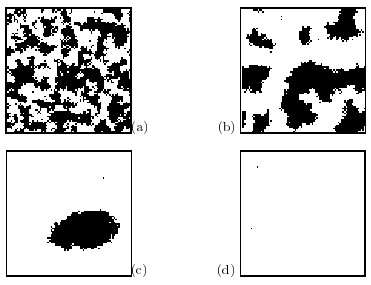Nonlinear voter models: The transition from invasion to coexistence
Frank Schweitzer and Laxmidhar Behera
The European Physical Journal B (2009)
Research: Opinions Emotions
Abstract
In nonlinear voter models the transitions between two states depend in a nonlinear manner on the frequencies of these states in the neighborhood. We investigate the role of these nonlinearities on the global outcome of the dynamics for a homogeneous network where each node is connected to $m = 4$ neighbors. The paper unfolds in two directions. We first develop a general stochastic framework for frequency dependent processes from which we derive the macroscopic dynamics for key variables, such as global frequencies and correlations. Explicite expressions for both the mean-field limit and the pair approximation are obtained. We then apply these equations to determine a phase diagram in the parameter space that distinguishes between different dynamic regimes. The pair approximation allows us to identify three regimes for nonlinear voter models: (i) complete invasion, (ii) random coexistence, and-- most interestingly-- (iii) correlated coexistence. These findings are contrasted with predictions from the mean-field phase diagram and are confirmed by extensive computer simulations of the microscopic dynamics.

